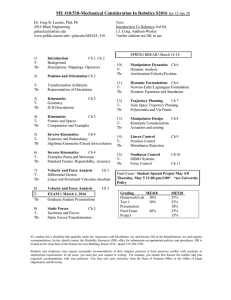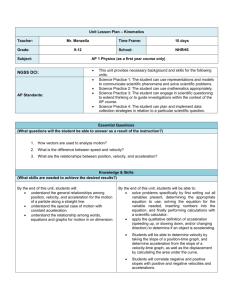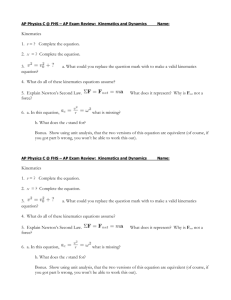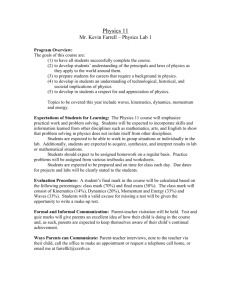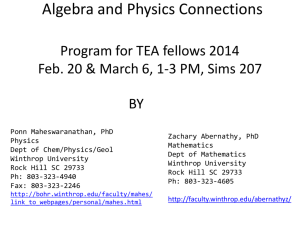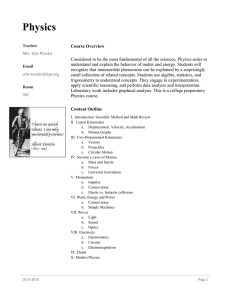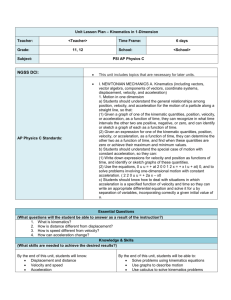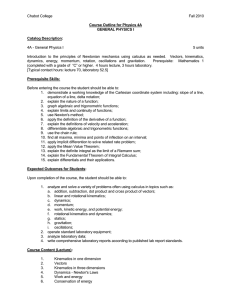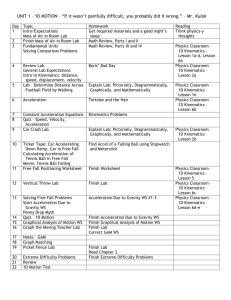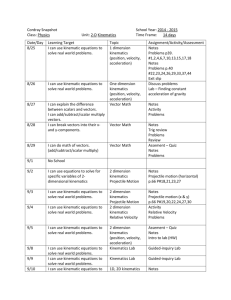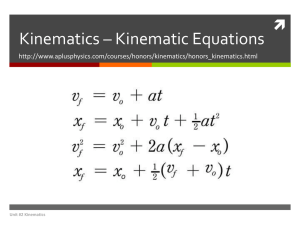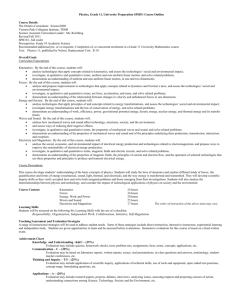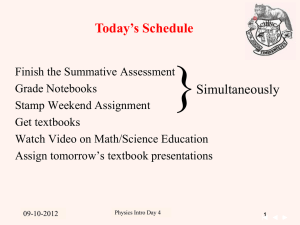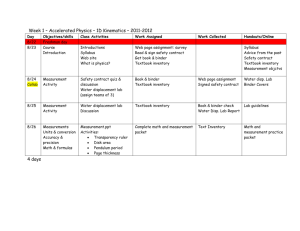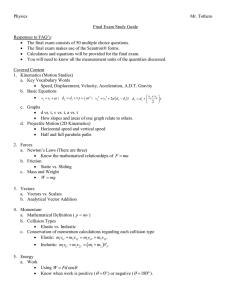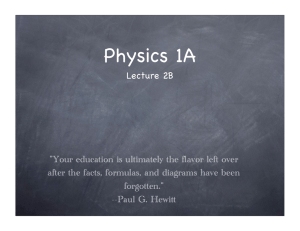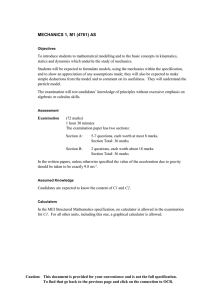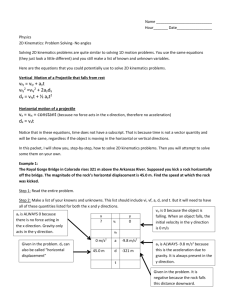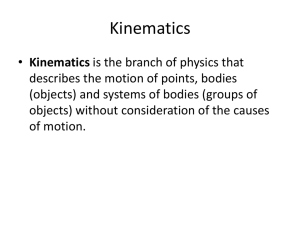INTER AMERICAN UNIVERSITY OF PUERTO RICO
advertisement
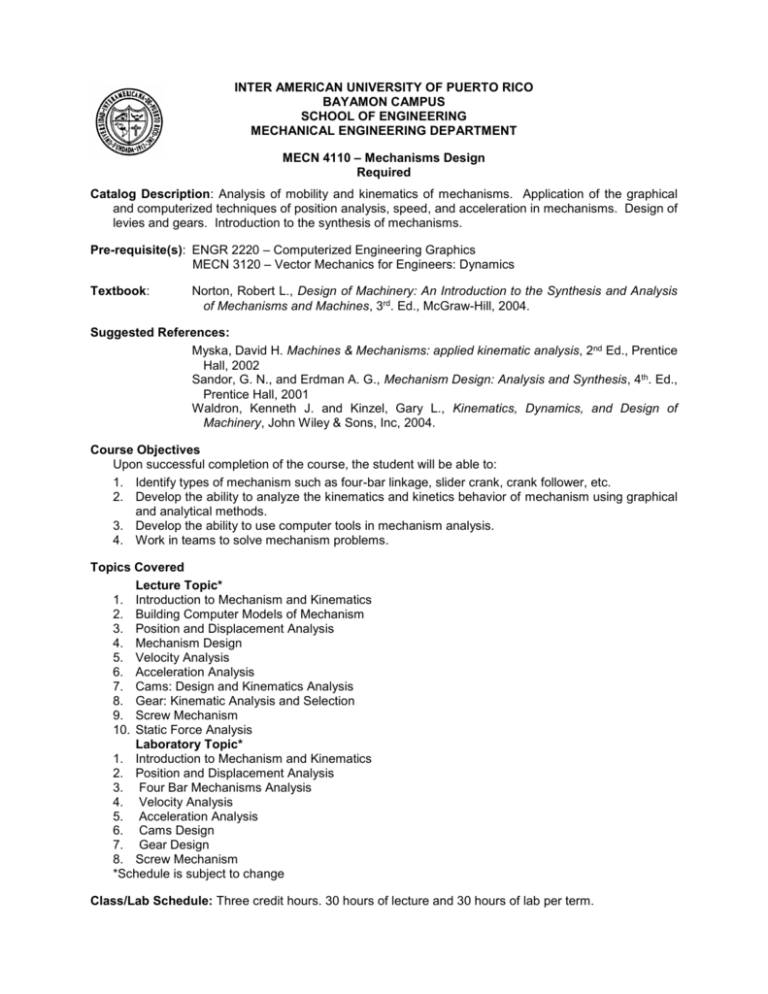
INTER AMERICAN UNIVERSITY OF PUERTO RICO BAYAMON CAMPUS SCHOOL OF ENGINEERING MECHANICAL ENGINEERING DEPARTMENT MECN 4110 – Mechanisms Design Required Catalog Description: Analysis of mobility and kinematics of mechanisms. Application of the graphical and computerized techniques of position analysis, speed, and acceleration in mechanisms. Design of levies and gears. Introduction to the synthesis of mechanisms. Pre-requisite(s): ENGR 2220 – Computerized Engineering Graphics MECN 3120 – Vector Mechanics for Engineers: Dynamics Textbook: Norton, Robert L., Design of Machinery: An Introduction to the Synthesis and Analysis of Mechanisms and Machines, 3rd. Ed., McGraw-Hill, 2004. Suggested References: Myska, David H. Machines & Mechanisms: applied kinematic analysis, 2nd Ed., Prentice Hall, 2002 Sandor, G. N., and Erdman A. G., Mechanism Design: Analysis and Synthesis, 4th. Ed., Prentice Hall, 2001 Waldron, Kenneth J. and Kinzel, Gary L., Kinematics, Dynamics, and Design of Machinery, John Wiley & Sons, Inc, 2004. Course Objectives Upon successful completion of the course, the student will be able to: 1. Identify types of mechanism such as four-bar linkage, slider crank, crank follower, etc. 2. Develop the ability to analyze the kinematics and kinetics behavior of mechanism using graphical and analytical methods. 3. Develop the ability to use computer tools in mechanism analysis. 4. Work in teams to solve mechanism problems. Topics Covered Lecture Topic* 1. Introduction to Mechanism and Kinematics 2. Building Computer Models of Mechanism 3. Position and Displacement Analysis 4. Mechanism Design 5. Velocity Analysis 6. Acceleration Analysis 7. Cams: Design and Kinematics Analysis 8. Gear: Kinematic Analysis and Selection 9. Screw Mechanism 10. Static Force Analysis Laboratory Topic* 1. Introduction to Mechanism and Kinematics 2. Position and Displacement Analysis 3. Four Bar Mechanisms Analysis 4. Velocity Analysis 5. Acceleration Analysis 6. Cams Design 7. Gear Design 8. Screw Mechanism *Schedule is subject to change Class/Lab Schedule: Three credit hours. 30 hours of lecture and 30 hours of lab per term. Grading Policy Grades are reported according to the following standard grading system: A (90-100), B (80-89), C (70-79), D (60-69), F (0-59) Contribution of Course to Meeting Professional Component Three credit hours of engineering science and two credit hours of engineering design. Relationship of Course to Program Outcomes** a b c d e f g h i j k **The numbers and letters correspond to the Program Educational Objectives and Program Outcomes of mechanical engineering, respectively. Revised by: Prof. Amilcar A. Rincon Charris, Date: 3/9/16 Supporting Services or Special Needs Students requiring additional services or special assistance must request these at the beginning of the course or as soon as they learn that they need them, through the appropriate register in the Coordination Office of Student Services located on the Student Affair Office. Honesty, Fraud and Plagiarism (General Student Regulations, Chapter V) The lack of honesty, fraud, plagiarism and any other inadequate behavior in relation to academic work constitute major infractions sanctioned by General Student Regulations. Major infractions, according to General Regulation Students, may result in suspension from the University for a definite period of time greater than one year or the permanent expulsion from the University, among others sanctions.

